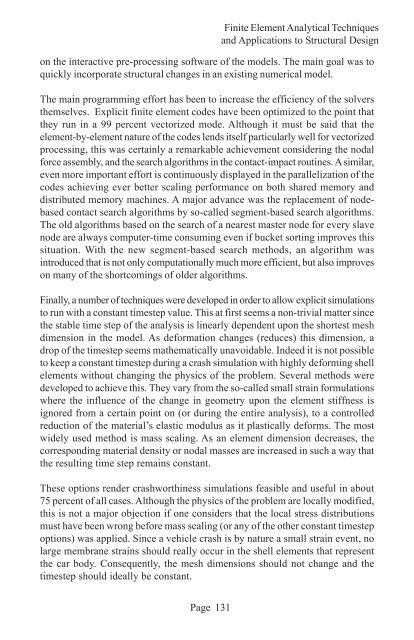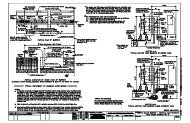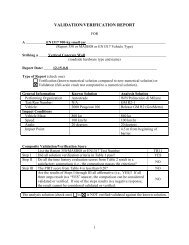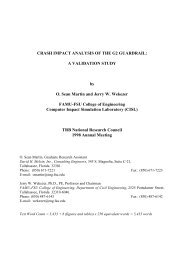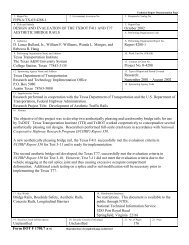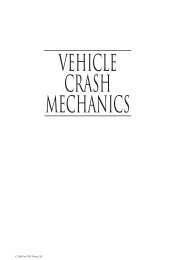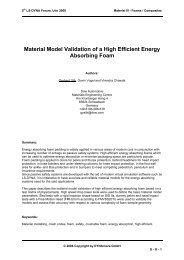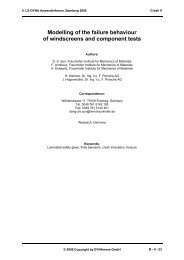Vehicle Crashworthiness and Occupant Protection - Chapter 3
Vehicle Crashworthiness and Occupant Protection - Chapter 3
Vehicle Crashworthiness and Occupant Protection - Chapter 3
Create successful ePaper yourself
Turn your PDF publications into a flip-book with our unique Google optimized e-Paper software.
Finite Element Analytical Techniques<br />
<strong>and</strong> Applications to Structural Design<br />
on the interactive pre-processing software of the models. The main goal was to<br />
quickly incorporate structural changes in an existing numerical model.<br />
The main programming effort has been to increase the efficiency of the solvers<br />
themselves. Explicit finite element codes have been optimized to the point that<br />
they run in a 99 percent vectorized mode. Although it must be said that the<br />
element-by-element nature of the codes lends itself particularly well for vectorized<br />
processing, this was certainly a remarkable achievement considering the nodal<br />
force assembly, <strong>and</strong> the search algorithms in the contact-impact routines. A similar,<br />
even more important effort is continuously displayed in the parallelization of the<br />
codes achieving ever better scaling performance on both shared memory <strong>and</strong><br />
distributed memory machines. A major advance was the replacement of nodebased<br />
contact search algorithms by so-called segment-based search algorithms.<br />
The old algorithms based on the search of a nearest master node for every slave<br />
node are always computer-time consuming even if bucket sorting improves this<br />
situation. With the new segment-based search methods, an algorithm was<br />
introduced that is not only computationally much more efficient, but also improves<br />
on many of the shortcomings of older algorithms.<br />
Finally, a number of techniques were developed in order to allow explicit simulations<br />
to run with a constant timestep value. This at first seems a non-trivial matter since<br />
the stable time step of the analysis is linearly dependent upon the shortest mesh<br />
dimension in the model. As deformation changes (reduces) this dimension, a<br />
drop of the timestep seems mathematically unavoidable. Indeed it is not possible<br />
to keep a constant timestep during a crash simulation with highly deforming shell<br />
elements without changing the physics of the problem. Several methods were<br />
developed to achieve this. They vary from the so-called small strain formulations<br />
where the influence of the change in geometry upon the element stiffness is<br />
ignored from a certain point on (or during the entire analysis), to a controlled<br />
reduction of the material’s elastic modulus as it plastically deforms. The most<br />
widely used method is mass scaling. As an element dimension decreases, the<br />
corresponding material density or nodal masses are increased in such a way that<br />
the resulting time step remains constant.<br />
These options render crashworthiness simulations feasible <strong>and</strong> useful in about<br />
75 percent of all cases. Although the physics of the problem are locally modified,<br />
this is not a major objection if one considers that the local stress distributions<br />
must have been wrong before mass scaling (or any of the other constant timestep<br />
options) was applied. Since a vehicle crash is by nature a small strain event, no<br />
large membrane strains should really occur in the shell elements that represent<br />
the car body. Consequently, the mesh dimensions should not change <strong>and</strong> the<br />
timestep should ideally be constant.<br />
Page 131


